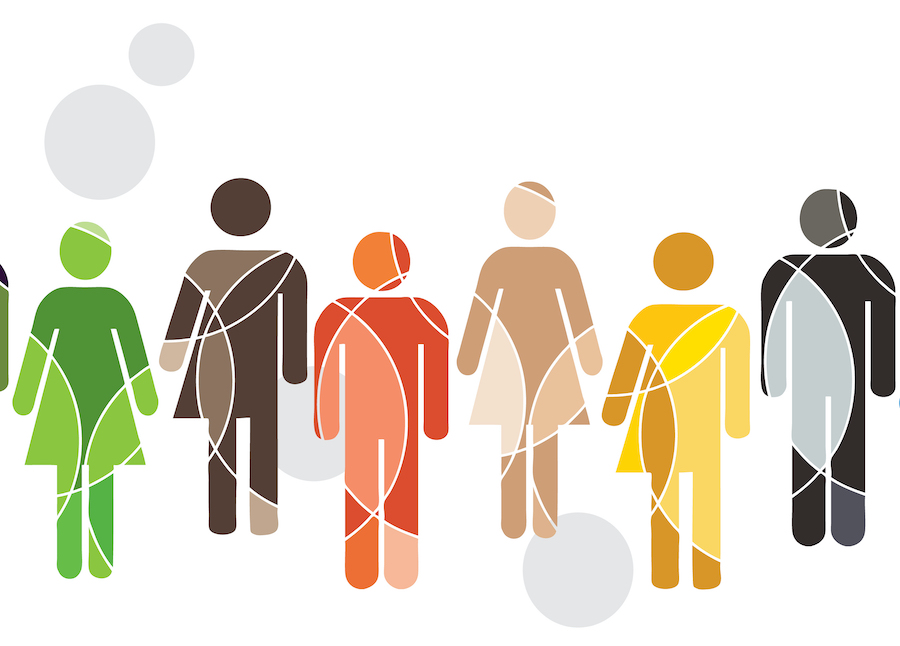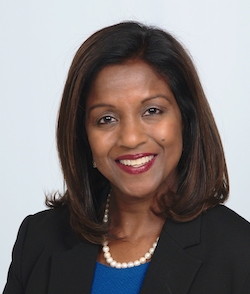Why Defining Who We Are Is Our Job
By Jaya Koilpillai Bohlmann, M.A., APR
April 2021
Growing up outside of a major metropolitan U.S. city, I usually didn’t even think about being Indian. It was just a fact of being, and my schoolmates represented all nationalities. My closest friends were a blonde, blue-eyed American; a Filipina; an African American; a hazel-eyed brunette and an Indian. We studied and played together, never really caring about our differences.
At home, my parents, who had emigrated to the United States two decades earlier, balanced our social closeness with other Indians (mostly extended family) with our yearly overseas travel, which took us to dozens of countries and all over the States. They blended the customs and culture of America with their own culture, and their global professions at the World Health Organization and the World Bank expanded our horizons even further.
My mother wore a sari to work every day, and when she wore one to school functions, my friends and their parents would comment admiringly about her elegance, even though as a typical teen I would cringe, embarrassed that we were being called out this way.
Once I was out of school and living on my own, I would notice more things. During my apartment search, the landlord, upon learning I was Indian, proclaimed that the closet space would be fine because “Indians usually don’t have too much.” What? Did he mean that Indians are poor?
Clearly, he did not know me, nor my wardrobe (which is what my roommate told him with a glare). In another incident, the owner of my new dry cleaner asked me, “What temple do you attend?” — assuming I practiced Hinduism.
Later, I was a vice president of communication in a multinational company and was strongly encouraged to join the Pan-Asian employee network group. I wanted to, but I also found myself a bit reluctant to join a group based solely on my race. I am, after all, a lot more than my race — everyone is.
A broader view of diversity
None of these events carried maliciousness — they simply made me aware that people were viewing me according to their own perceptions of Indians as a group, rather than of me as an individual. This was annoying, but I still wasn’t framing the experiences as racism, bias or prejudice.
Later, I fell in love with and married a man not from India, but from Indiana. I became part of a mixed-race couple, which grew into a mixed-race family — our gorgeous biracial daughter is the best of both of us. We have made her aware of her European and Indian heritages, all of the cultures and customs that make her unique. She is learning to identify as part of both cultures on her terms.
She does this as part of Generation Z. This amazing group, aside from being the most diverse U.S. generation ever, will never allow their friends to be mistreated for reasons as minimal, to them, as race.
I think the goal is not to have anyone else decide for us who we are or where we belong. They will get it wrong or leave it incomplete. No matter — our story is ours to tell, no one else’s. Defining who we are is our job, no one else’s.
For me, this means the following: By appearance, you might surmise that I’m Indian, but you can’t tell that I’m a U.S. citizen by birth, I’m a Christian, I don’t speak Hindi, I am not an engineer nor a doctor, I’m an introvert, I work in public relations, etc. My point: If you want to know me, you can’t just look at me; you have to talk to me, observe me, interact with me.
That’s why I advocate for a view of diversity broader than age, race, sexual orientation and gender. It’s about all the things that could make us similar to or different from those around us in any situation.
I’ve worked in public relations for decades and have studied diversity, equity and inclusion in the workplace, and as the focus of my M.S. in business and organization behavior. I continue to observe and assess my own biases and those of others.
Experience and training have taught me that diversity in the workplace demands self-awareness, the courage to change and the leadership of communicators. Many believe against the backdrop of Black Lives Matter, #MeToo and COVID-19, real change can happen. Real change must happen.



